Etiqueta "python"
Se han encontrado 41 Coincidencias.png)
Head-First Programming
210 Visitas | 301 Descargas | 2013-09-17 05:00:04 | rmillo
Looking for a reliable way to learn how to program on your own, without being overwhelmed by confusing concepts? "Head First Programming" introduces the core concepts of writing computer programs - variables, decisions, loops, functions, and objects - which apply regardless of the programming language. This book offers concrete examples and exercises in the dynamic and versatile Python language to demonstrate and reinforce these concepts. You can learn the basic tools to start writing the programs that interest you, and get a better understanding of what software can (and cannot) do. When you're finished, you'll have the necessary foundation to learn any programming language or tackle any software project you choose. With a focus on programming concepts, this book teaches you how to: understand the core features of all programming languages, including variables, statements, decisions, loops, expressions, and operators; reuse code with functions; use library code to save time and effort; select the best data structure to manage complex data; write programs that talk to the Web; share your data with other programs; and, write programs that test themselves and help you avoid embarrassing coding errors. We think your time is too valuable to waste struggling with new concepts. Using the latest research in cognitive science and learning theory to craft a multi-sensory learning experience, "Head First Programming" uses a visually rich format designed for the way your brain works, not a text-heavy approach that puts you to sleep.
.png)
Head-First Python
733 Visitas | 10372 Descargas | 2013-09-17 05:03:06 | rmillo
Are you keen to add Python to your programming skills? Learn quickly and have some fun at the same time with Head First Python. This book takes you beyond typical how-to manuals with engaging images, puzzles, stories, and quizzes that are proven to stimulate learning and retention. You'll not only learn how Python differs from other programming languages and how it's similar, you'll learn how to be a great programmer. * Understand Python's unique method of dynamically storing data * Build Python-enabled web servers and web applications * Write mobile apps on the Android platform * Use PyGame and PyKyra to develop sophisticated games * Build GUI-based programs with Python's handy code library * Write Python scripts to automate tasks on your favorite applications We think your time is too valuable to waste struggling with new concepts. Using the latest research in cognitive science and learning theory to craft a multi-sensory learning experience, Head First Python uses a visually rich format designed for the way your brain works, not a text-heavy approach that puts you to sleep.
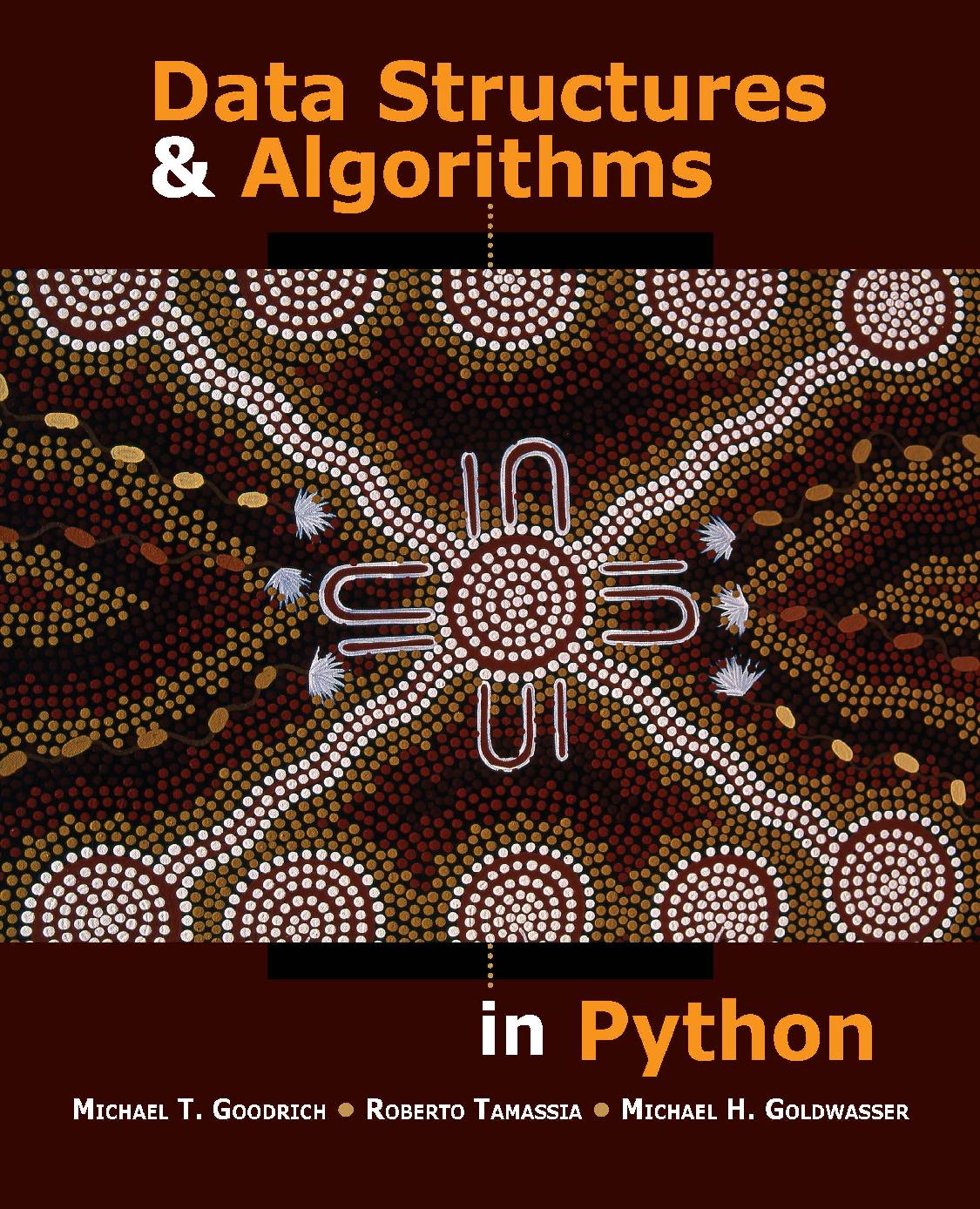
Data Structures and Algorithms in Python
Data Structures and Algorithms in Python
277 Visitas | 443 Descargas | 2013-09-17 12:57:01 | dpr
The design and analysis of efficient data structures has long been recognized as a vital subject in computing and is part of the core curriculum of computer science and computer engineering undergraduate degrees. Data Structures and Algorithms in Python provides an introduction to data structures and algorithms, including their design, analysis, and implementation. This book is designed for use in a beginning level data structures course, or in an intermediate-level introduction to algorithms course.
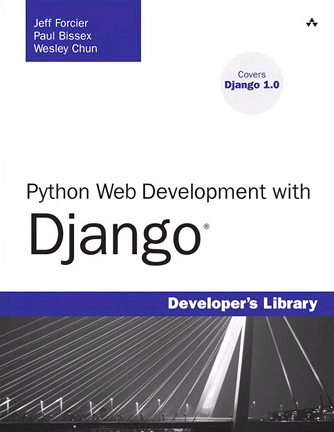
Python Web Development with Django
244 Visitas | 391 Descargas | 2013-09-23 14:42:20 | jgramos
Greetings,and welcome to Django! We’re glad to have you along on our journey.You will discover a powerful Web application framework that lets you do everything rapidly—from designing and developing the original application to updating its features and functionality without requiring major changes to the codebase.
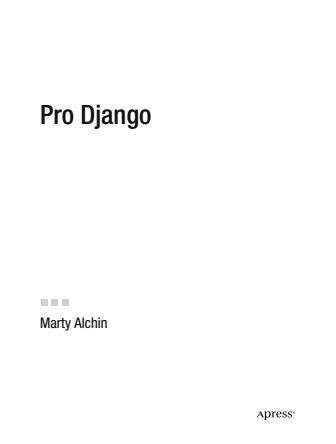
Pro Django
154 Visitas | 230 Descargas | 2013-09-23 14:44:36 | jgramos
Pro Djangorepresents two and a half years of accumulated knowledge in Python and Django, designed to educate readers who are already familiar with both topics and would like to take them further than they had previously done. You will learn a wide range of advanced techniques available in both Python and Django, along with tips on how to use them to achieve advanced functionality. This book is designed to be both a narrative to be read from start to finish and a general reference to be searched for specific information. Since you may not know what to look for or where to find it yet, feel free to read through the book first, then keep it handy for refreshing your memory as necessary.
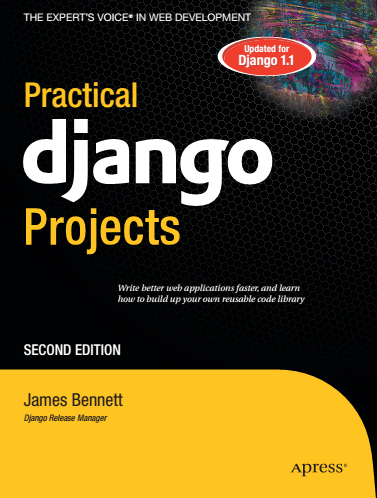
Practical Django Projects
176 Visitas | 280 Descargas | 2013-09-23 14:47:31 | jgramos
Web development is hard, and don’t let anybody tell you otherwise. Building a fully functional, dynamic web application with all the features that users want is a daunting task with a seemingly endless list of things you have to get just right. And before you can even start thinking about most of them, you must do a huge amount of up-front work: set up a database, create all the tables to store your data, plan out all the relationships and queries, come up with a solution for dynamically generating the HTML, figure out how to map specific URLs to different bits of code, and more. Just getting to the point where you can add features your users will see or care about is a vast and largely thankless job. But it doesn’t have to be that way. This book will teach you how to use Django, a “web framework” that will significantly ease the pain of embarking on new development projects. You’ll be able to follow along as you build real-world applications, and at every step you’ll see how Django is there to help you out. At the end, you’ll come to a wonderful realization—that web development is fun again.
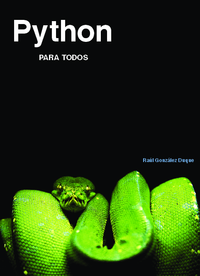
Python para todos
Aprender a programar en Python
379 Visitas | 576 Descargas | 2013-09-26 14:35:48 | moliver
Python es un lenguaje de programación creado por Guido van Rossum a principios de los años 90 cuyo nombre está inspirado en el grupo de cómicos ingleses “Monty Python”. Es un lenguaje similar a Perl, pero con una sintaxis muy limpia y que favorece un código legible. Se trata de un lenguaje interpretado o de script, con tipado dinámico, fuertemente tipado, multiplataforma y orientado a objetos.
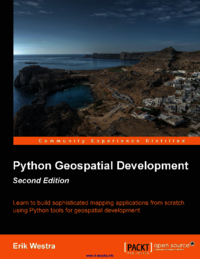
Python Geospatial Development, 2nd Edition
Programing
166 Visitas | 215 Descargas | 2013-10-01 00:44:49 | cbustillo
Geospatial development links your data to places on the Earth's surface. Writing geospatial programs involves tasks such as grouping data by location, storing and analyzing large amounts of spatial information, performing complex geospatial calculations, and drawing colorful interactive maps. In order to do this well, you'll need appropriate tools and techniques, as well as a thorough understanding of geospatial concepts such as map projections, datums and coordinate systems. Python Geospatial Development - 2nd Edition teaches you everything you need to know about writing geospatial applications using Python. No prior knowledge of geospatial concepts, tools or techniques is required. The book guides you through the process of installing and using various toolkits, obtaining geospatial data for use in your programs, and building complete and sophisticated geospatial applications in Python.
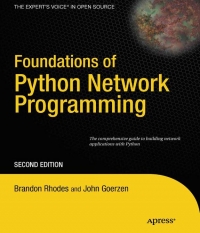
Foundations of Python Network Programming, 2nd Edition
Programing
156 Visitas | 299 Descargas | 2013-10-01 01:18:35 | cbustillo
You will learn fundamentals like IP, TCP, DNS and SSL by using working Python programs; you will also be able to familiarize yourself with infrastructure components like memcached and message queues. You can also delve into network server designs, and compare threaded approaches with asynchronous event-based solutions. But the biggest change is this edition's expanded treatment of the web. The HTTP protocol is covered in extensive detail, with each feature accompanied by sample Python code. You can use your HTTP protocol expertise by studying an entire chapter on screen scraping and you can then test lxml and BeautifulSoup against a real-world web site.
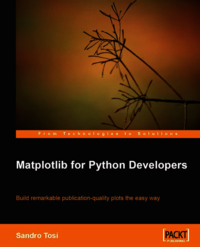
Matplotlib for Python Developers
Matplotlib, Python
152 Visitas | 214 Descargas | 2013-10-03 13:22:48 | alvarojs
This book is about Matplotlib, a Python package for 2D plotting that generates production quality graphs. Its variety of output formats, several chart types, and capability to run either interactively (from Python or IPython consoles) and non-interactively (useful, for example, when included into web applications), makes Matplotlib suitable for use in many different situations.
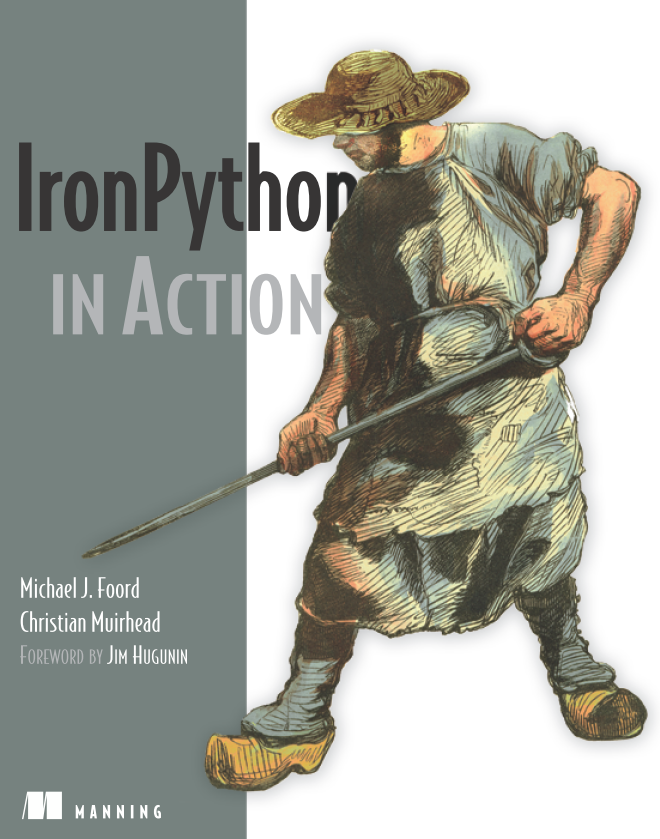
IronPython in Action
IronPython, programming
110 Visitas | 159 Descargas | 2013-10-03 13:33:41 | alvarojs
IronPython is a radical project for Microsoft. It is the first project to be released under their Ms-PL (Microsoft Public License) open source license. It is also a radically different language from the ones that Microsoft has traditionally promoted for the .NET framework. IronPython is an implementation of the popular programming language Python for .NET. Python is an open source, object-oriented, dynamically typed language in use by organizations like Google, NASA and Pixar. Python is a multi-paradigm language, and brings new possibilities to .NET programmers: not just the added flexibility of dynamic typing, but programming styles such as functional programming and metaprogramming. For Python programmers the powerful runtime, with its JIT compiler and huge range of .NET libraries, also presents new opportunities.
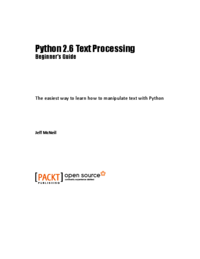
Python 2.6 Text Processing
Guía para principiantes sobre "Procesamiento de ficheros de textos en python".
165 Visitas | 262 Descargas | 2013-10-16 12:50:56 | abelm
Este libro es una guía básica para principiantes que comienzan en el procesamiento de textos con python. Contiene elementos básicos para la manipulación de textos utilizando las bibliotecas estándar de python, trabajo con cadenas de texto, intercambio de datos con formatos CSV, JSON. Además contiene un capítulo completo de expresiones regulares, así como el trabajo con formatos de marcado como HTML. Posee numerosos ejemplos de como escribir la salida de nuestro programa de procesamiento de textos, análisis gramatical y un último capítulo dedicado a la indexación y búsqueda con la biblioteca python-nucular. Está orientado a ejercicios y gran parte del libro se dedica a explicar la solución de los mismos.
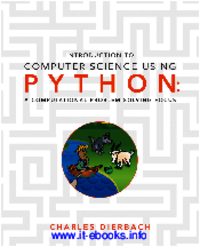
Introduction to Computer Science Using Python: A Computational Problem-Solving Focus
Introducción a la programación y a la solución de problemas de computación utilizando python3.
213 Visitas | 403 Descargas | 2013-11-07 02:27:56 | abelm
Dedica su primer capítulo a introducir las ciencias de la computación, los algoritmos, y otras cuestiones básicas. Su segundo capítulo está orientado a la solución de problemas de computación, esencialmente como es el proceso y el análisis de un problema concreto como caso de estudio. Con posterioridad introduce los conceptos de Datos y Expresiones (cap2), Estructuras de Control (cap3), Listas (cap4), Funciones (cap5), Objetos (cap6), Diseño modular (cap7), Trabajo con ficheros de texto (cap8), Estructura del tipo Diccionarios y Conjuntos (cap9), Programación Orientada a Objetos (cap10), Recursividad (cap11), y un último capítulo recorre el desarrollo de la computación desde sus inicios hasta hoy. Algo importante es que cada capítulo termina con la solución de un problema concreto donde se utiliza la materia impartida en los primeros epígrafes del mismo.
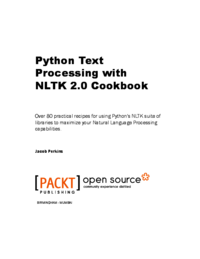
Python Text Processing with NLTK 2.0 Cookbook
Procesamiento de Lenguaje Natural con Python-NLTK
174 Visitas | 248 Descargas | 2013-10-15 21:18:37 | abelm
El libro aborda los problemas de NLP más básicos utilizando la biblioteca estándar de python: NLTK. Tiene ejemplos para cada uno de estos problemas. Algunos de los problemas tratados son: división en segmentos o palabras(tokenización), corrección de palabras, creación de corpus lingüísticos personalizados, POS, extracción de fragmentos, transformación de frases y árboles, clasificación de textos, procesamiento de datasets, y análisis de textos HTML.
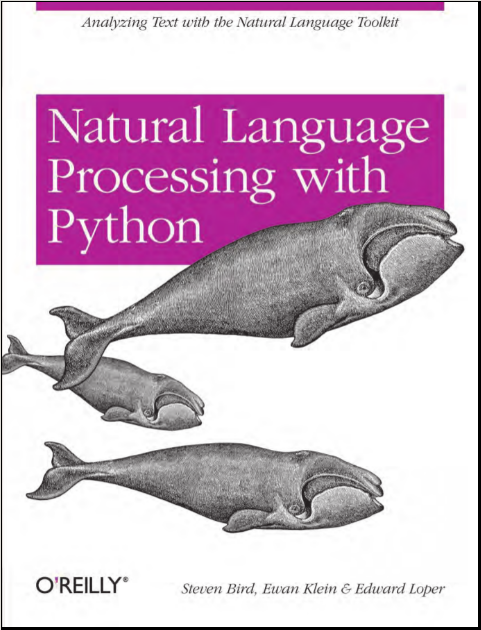
Natural Language Processing with Python
Procesamiento de Lenguaje Natural
200 Visitas | 379 Descargas | 2013-10-17 14:26:46 | abelm
Es un libro de procesamiento de lenguaje natural con python utilizando python-nltk. Los contenidos que trata son: una introducción al procesamiento de textos con python, cómo acceder a corpus y recursos léxicos, procesamiento de textos en formato RAW, nociones para programar de forma estructurada tus proyectos en este tipo de campo científico. Además dedica capítulos por separado a la categorización y el etiquetado, clasificación de textos, extracción de información, análisis de estructura de la oración, análisis semántico de la oración.
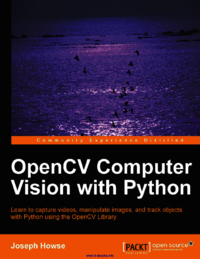
OpenCV Computer Vision with Python
Programar con el binding de OpenCV para manipular imágenes, video utilizando la webcam e incluso un Kinect.
198 Visitas | 315 Descargas | 2013-11-07 02:38:38 | abelm
El libro comienza con los pasos necesarios para instalar esta herramienta en cualquiera de los 3 sistemas más conocidos: Windows, MacOS o Ubuntu. El capítulo 2 trata el manejo de ficheros, cámaras e interfaces gráficas. Posteriormente en cada capítulo expone los temas de Filtrado, Rastreo, Detección de regiones y profundidad. Contiene dos valiosos apéndices para la integración con la biblioteca python-game y otro para el trabajo con Haarcascade personalizado para diferentes tareas.
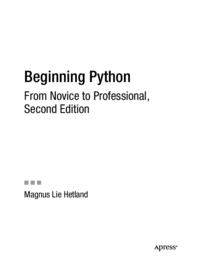
Beginning Python From Novice to Professional, Second Edition
Programación en Lenguaje Python
214 Visitas | 304 Descargas | 2013-11-25 05:05:39 | abelm
Este es un libro excelente para aprender a programar en python, y finalmente para hacer cosas extraordinarias también. A diferencia de otros libros dedica sus primeros 4 capítulos a: cuestiones básicas como la instalación en GNU/Linux y Windows, Listas y Tuplas, Strings y Diccionarios. Luego analiza los flujos, Funciones, Recursividad, Herencia, Manejo de Excepciones, entre otros. En una virtual tercera agrupación a partir del capítulo 11 analiza el trabajo con ficheros, Interfaces Gráficas, Soporte a Bases de Datos, Programación para Redes de Datos, Aplicaciones Web y Testing. A partir del capítulo 17, ya más avanzado, se pueden encontrar códigos muy bien documentados de como extender el lenguaje, empaquetar tus programas, programar parsers para HTML, XML, crear estructuras de comunicación como XML.RPC,....
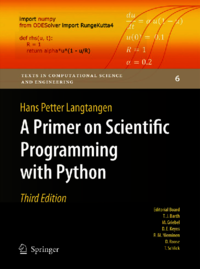
A Primer on Scientific Programming with Python
Programación en Lenguaje python utilizando problemas matemáticos y de las ciencias naturales.
178 Visitas | 256 Descargas | 2013-11-27 06:24:39 | abelm
El objetivo del libro es enseñar programación en python utilizando problemas de las matemáticas y las ciencias naturales. Utiliza algunos ejemplos de trabajo con ficheros genéticos(ADN). El Cap1 contiene trabajo introductorio con fómulas en el lenguaje python. Cap2 Ciclos y tipo de datos Lista. Cap3 Funciones. Cap4 Trabajo con ficheros y manejo de errores y excepciones. Cap5 Arreglos y Plotting. Cap6 "Clases" de la POO. Cap7 Números aleatorios y su aplicación a juegos sencillos. Cap9. Programación Orientada a Objetos. Contiene 8 apéndices dedicados fundamentalmente a: trabajo con ecuaciones diferenciales, código python en lenguajes compilados, y otros temas tecnológicos.
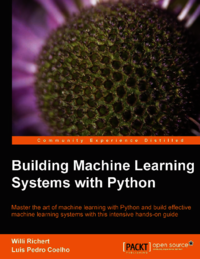
Building Machine Learning Systems with Python
Master the art of machine learning with Python and build effective machine learning systems with this intensive hands-on guide
234 Visitas | 385 Descargas | 2013-12-04 06:30:53 | abelm
Excelente libro del 2013 elaborado por programadores y profesionales de la bioinformática. El libro comienza haciendo una introducción a Machine Learning, y utilizando un ejemplo práctico y sencillo para que los estudiantes comiencen. Cap2, está dedicado en su comienzo a los problemas de clasificación con ejemplos reales, y analiza problemas más complejos de clasificación. Cap3 Agrupamiento, este capítulo utiliza un ejemplo de procesamiento de texto, añadiendo NLTK y analiza todo el proceso NLP para luego realizar clustering de textos. Capt4 Topic Modeling, un tema más complejo que analiza el LDA, similaridad en el espacio de temas(topic space). Cap5 También dedicado a clasificación pero mucho más fuerte, utiliza un ejemplo de medición de la calidad de las respuestas, es lo que se dice el análisis de un ejemplo avanzado. Cap6 Dedicado al muy actual tema del Análisis de Sentimientos, este tema es una de las tareas muy actuales del Procesamiento del Lenguaje Natural. Cap 7 y 8 dedicado a la Regresión, utiliza interesantes ejemplos para mostrar este tema de ML. Cap9 Regresa con más sobre Clasificación en este caso con un análisis del género musical, utilizando procesamiento de señales. Cap 10 Computer Vision. Cap 11 Reducción de la Dimensionalidad. Cap12 y final, como aprender de grandes colecciones de datos, aprender a procesar estos conjuntos eficientemente. Contiene un apéndice con referencias a dónde más leer para aprender sobre ML.
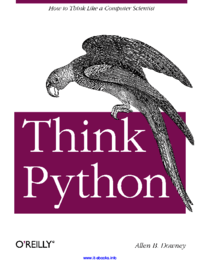
Think Python
Programación en lenguaje python.
153 Visitas | 230 Descargas | 2013-12-04 06:36:42 | abelm
Un excelente libro para aprender y enseñar a programar en python. Contiene por capítulos todos los temas de la programación orientada a objetos así como un capítulo para cada tipo de datos de este lenguaje. Es la base para el libro Think Complexity del mismo autor.
Contribuir
Usted puede contribuir con Libros UCLV, es importante para nosotros su aporte..
Contribuir